-
 Bitcoin
Bitcoin $105,393.2701
0.32% -
 Ethereum
Ethereum $2,539.8891
0.19% -
 Tether USDt
Tether USDt $1.0002
-0.05% -
 XRP
XRP $2.1676
-0.02% -
 BNB
BNB $647.6358
-0.15% -
 Solana
Solana $148.7849
2.09% -
 USDC
USDC $0.9999
-0.01% -
 Dogecoin
Dogecoin $0.1754
-1.60% -
 TRON
TRON $0.2724
1.02% -
 Cardano
Cardano $0.6297
-0.81% -
 Hyperliquid
Hyperliquid $40.5463
-2.38% -
 Sui
Sui $2.9592
-1.20% -
 Bitcoin Cash
Bitcoin Cash $452.8675
4.05% -
 Chainlink
Chainlink $13.1569
0.04% -
 UNUS SED LEO
UNUS SED LEO $9.1902
1.45% -
 Stellar
Stellar $0.2579
-0.56% -
 Avalanche
Avalanche $18.9443
-0.94% -
 Toncoin
Toncoin $2.9562
0.08% -
 Shiba Inu
Shiba Inu $0.0...01199
-1.84% -
 Litecoin
Litecoin $86.0359
-0.12% -
 Hedera
Hedera $0.1540
-2.80% -
 Polkadot
Polkadot $3.8008
0.15% -
 Ethena USDe
Ethena USDe $1.0002
-0.03% -
 Monero
Monero $318.6978
1.97% -
 Dai
Dai $0.9998
-0.01% -
 Bitget Token
Bitget Token $4.5212
-0.70% -
 Pepe
Pepe $0.0...01115
0.13% -
 Uniswap
Uniswap $7.1777
-1.90% -
 Pi
Pi $0.6027
-1.72% -
 Aave
Aave $276.4939
0.23%
Binance Spot Breakout Trading: Key Price Capture Method
Breakout trading on Binance Spot focuses on key price levels, using volume and indicators to confirm momentum and manage risk effectively.
Jun 15, 2025 at 11:07 am
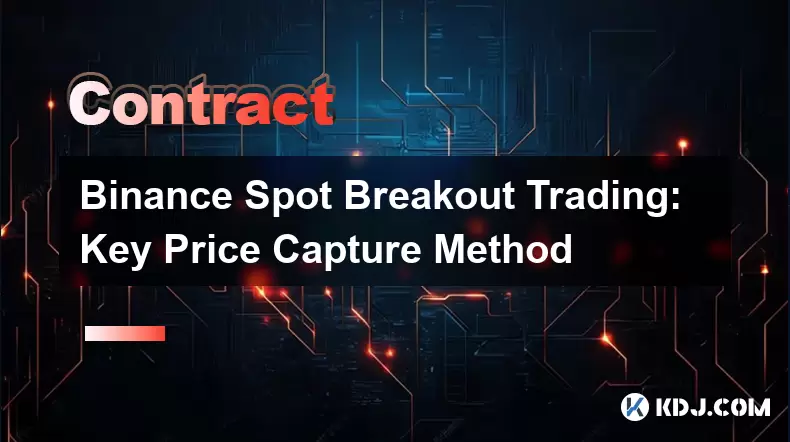
Understanding Binance Spot Breakout Trading
Breakout trading on Binance Spot involves identifying key price levels where an asset's price is likely to move significantly beyond a defined range. Traders look for these breakouts to capitalize on increased volatility and momentum. The core idea behind breakout trading is that once the price moves past a resistance or support level, it may continue in that direction due to increased buying or selling pressure.
To effectively engage in breakout trading, traders must first identify consolidation zones or areas where the price has been moving sideways. These are typically marked by clear horizontal support and resistance lines. When the price breaks above resistance or below support, it signals a potential change in market sentiment.
One of the most important aspects of breakout trading is confirming the validity of the breakout. This can be done through volume analysis, candlestick patterns, or technical indicators such as the Relative Strength Index (RSI) or Moving Average Convergence Divergence (MACD).
Identifying Key Price Levels
Accurate identification of key price levels is crucial in breakout trading. These levels act as psychological barriers that traders watch closely for potential reversals or continuations. Support and resistance levels can be derived from previous swing highs and lows, trendlines, Fibonacci retracement levels, or pivot points.
Traders often use multiple time frame analysis to confirm these levels. For instance, a daily chart may show a strong resistance level, while the 4-hour chart might reveal a smaller consolidation pattern within that zone. This multi-timeframe approach helps filter out false breakouts and increases the probability of successful trades.
Another effective method for determining key levels is using order block zones or areas with significant historical price action. These zones indicate where large institutional players may have placed orders, making them high-probability reversal or continuation points.
Confirming Breakouts With Volume and Indicators
Volume plays a critical role in confirming whether a breakout is genuine or just a false move. A valid breakout usually comes with a surge in trading volume, indicating strong participation from market participants. On Binance, you can view the volume profile directly beneath the price chart, allowing real-time assessment of volume spikes.
Technical indicators like On-Balance Volume (OBV) and Volume Weighted Average Price (VWAP) help assess whether the breakout has enough momentum to sustain itself. Additionally, oscillators like RSI and MACD can provide further confirmation. For example, if the price breaks out but the RSI remains above 50 and continues to rise, it suggests bullish strength.
Candlestick patterns also play a vital role in confirmation. Bullish engulfing patterns or bearish engulfing patterns at key levels can serve as additional signals for entering a trade after a breakout.
Setting Entry Points and Stop Losses
Once a breakout is confirmed, the next step is determining the entry point. There are two main approaches: immediate entry upon breakout confirmation or waiting for a retest of the broken level. Immediate entry allows traders to capture momentum early, while retest entries offer better risk-to-reward ratios.
Stop loss placement is essential for managing risk. In breakout trading, a common strategy is placing a stop just below the breakout level in a bullish scenario or just above in a bearish one. This ensures that if the price reverses quickly, losses remain minimal.
Position sizing should align with your risk tolerance. Typically, risking no more than 1–2% of your total capital per trade is recommended. Using tools like Binance’s built-in stop-loss and take-profit functions can automate this process and prevent emotional decision-making.
Managing the Trade and Taking Profits
After entering a breakout trade, active management is required to maximize gains and minimize losses. One technique is trailing stops, which allow profits to run while protecting against sudden reversals. Binance offers trailing stop functionality that adjusts dynamically based on price movement.
Profit-taking can be structured in stages. For instance, closing part of the position at the first target and letting the rest ride toward higher targets can increase overall returns. Targets can be determined using measured move projections, Fibonacci extensions, or prior swing highs/lows.
Monitoring the trade on lower timeframes, such as the 15-minute or 30-minute charts, can help fine-tune exits. Pay attention to signs of exhaustion like long wicks, divergence in momentum indicators, or decreasing volume, which may signal a reversal is imminent.
Frequently Asked Questions
Q: What timeframe is best for breakout trading on Binance Spot?
A: While breakout strategies can work across all timeframes, many traders prefer the 1-hour and 4-hour charts for balancing accuracy and opportunity. Higher timeframes like daily charts offer stronger signals, whereas shorter timeframes like 15-minute charts can be used for precise entry and exit points.
Q: How do I avoid fakeouts in breakout trading?
A: Fakeouts occur when the price briefly breaks a key level before reversing. To reduce their impact, wait for candlestick closure beyond the level and confirm with volume and indicators. Avoid chasing price immediately after a breakout; instead, consider pullback entries or retests.
Q: Can I use leverage in breakout trading on Binance Spot?
A: Yes, Binance Spot allows for margin trading with leverage. However, leverage amplifies both gains and losses. It is advisable to use conservative leverage (e.g., 2x–5x) in breakout strategies to maintain control over risk exposure.
Q: Are there specific coins on Binance that are better suited for breakout trading?
A: High-liquidity pairs such as BTC/USDT, ETH/USDT, and BNB/USDT tend to offer clearer breakout opportunities due to their strong volume and consistent price action. Altcoins with low liquidity may experience erratic movements, increasing the likelihood of false breakouts.
Disclaimer:info@kdj.com
The information provided is not trading advice. kdj.com does not assume any responsibility for any investments made based on the information provided in this article. Cryptocurrencies are highly volatile and it is highly recommended that you invest with caution after thorough research!
If you believe that the content used on this website infringes your copyright, please contact us immediately (info@kdj.com) and we will delete it promptly.
- BlackRock Makes a Big Splash in the Bitcoin ETF Market
- 2025-06-15 22:35:12
- TON Factory Promises to Accelerate the Development and Scalability of High-Throughput Applications
- 2025-06-15 22:35:12
- Researchers Conduct AI Experiment on Reddit Users Without Their Consent
- 2025-06-15 22:30:12
- US SEC Drops Investigation into PayPal's PYUSD Stablecoin
- 2025-06-15 22:30:12
- Nasdaq Filed to List the 21Shares Dogecoin ETF
- 2025-06-15 22:25:13
- PayPal (NASDAQ: PYPL) Announces the U.S. SEC has Closed Its Investigation into the Company’s USD-backed Stablecoin, PYUSD
- 2025-06-15 22:25:13
Related knowledge
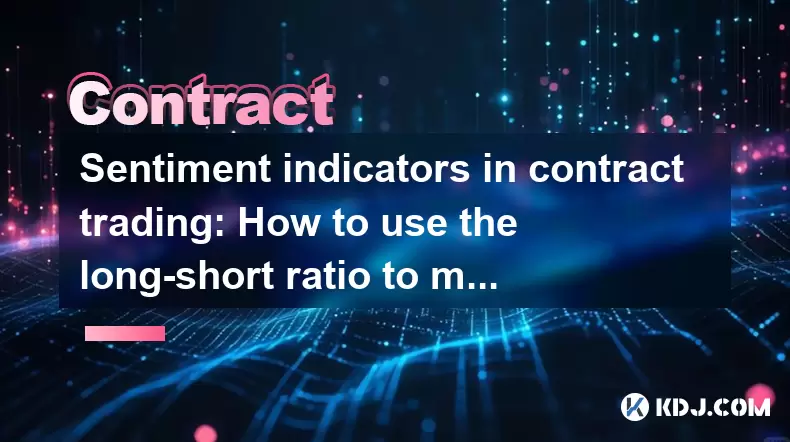
Sentiment indicators in contract trading: How to use the long-short ratio to make decisions?
Jun 14,2025 at 07:00am
What Are Sentiment Indicators in Contract Trading?In the realm of cryptocurrency contract trading, sentiment indicators play a crucial role in gauging market psychology. These tools help traders understand whether the market is dominated by bullish or bearish expectations. Among these indicators, the long-short ratio stands out as one of the most tellin...
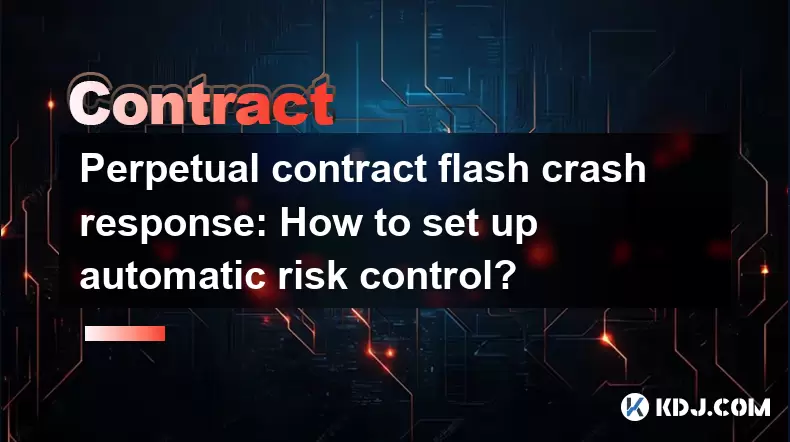
Perpetual contract flash crash response: How to set up automatic risk control?
Jun 13,2025 at 06:28pm
Understanding Perpetual Contract Flash CrashesA flash crash in the context of perpetual contracts refers to a sudden, sharp, and often short-lived drop or spike in price due to high volatility, thin order books, or algorithmic trading activities. These events can lead to massive liquidations across long or short positions on trading platforms. Traders m...

Take-profit strategy in contract trading: Comparison between dynamic take-profit and fixed take-profit
Jun 14,2025 at 07:08am
What Is Take-profit in Contract Trading?In the realm of cryptocurrency contract trading, take-profit refers to a predefined price level at which a trader automatically closes a profitable position. This mechanism is essential for risk management and profit locking. Traders use take-profit orders to ensure they secure gains without being swayed by emotio...
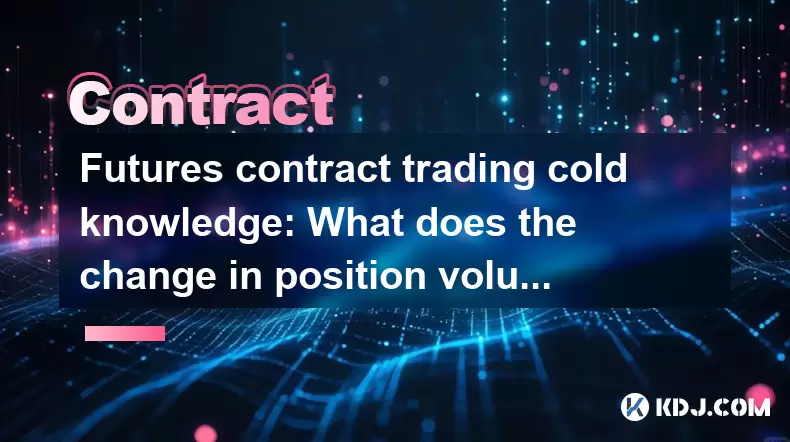
Futures contract trading cold knowledge: What does the change in position volume indicate?
Jun 14,2025 at 09:22pm
Understanding Position Volume in Futures Contract TradingIn the world of futures contract trading, position volume is a key metric that often goes overlooked by novice traders. Unlike simple price or volume indicators, position volume reflects the total number of open contracts at any given time. This metric provides insights into market sentiment and c...

Analysis of perpetual contract reverse contracts: The difference between BTC/USD and USD/BTC
Jun 15,2025 at 03:49am
Understanding Perpetual Contracts in Cryptocurrency TradingIn the realm of cryptocurrency derivatives, perpetual contracts have become a cornerstone for both novice and seasoned traders. Unlike traditional futures contracts that have an expiration date, perpetual contracts can be held indefinitely. This feature allows traders to maintain positions as lo...
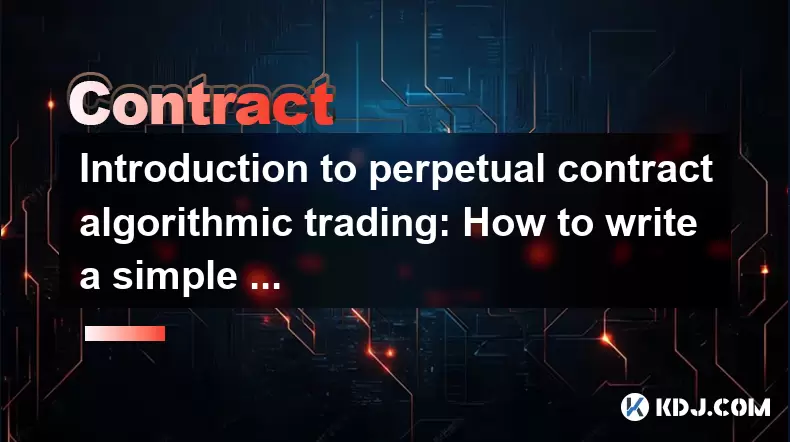
Introduction to perpetual contract algorithmic trading: How to write a simple trading robot?
Jun 15,2025 at 07:00am
Understanding Perpetual Contracts in Cryptocurrency TradingPerpetual contracts are derivative financial instruments that allow traders to speculate on the price of an asset without owning it. Unlike traditional futures, perpetual contracts have no expiration date, making them popular among cryptocurrency traders who want to maintain positions for extend...

Sentiment indicators in contract trading: How to use the long-short ratio to make decisions?
Jun 14,2025 at 07:00am
What Are Sentiment Indicators in Contract Trading?In the realm of cryptocurrency contract trading, sentiment indicators play a crucial role in gauging market psychology. These tools help traders understand whether the market is dominated by bullish or bearish expectations. Among these indicators, the long-short ratio stands out as one of the most tellin...

Perpetual contract flash crash response: How to set up automatic risk control?
Jun 13,2025 at 06:28pm
Understanding Perpetual Contract Flash CrashesA flash crash in the context of perpetual contracts refers to a sudden, sharp, and often short-lived drop or spike in price due to high volatility, thin order books, or algorithmic trading activities. These events can lead to massive liquidations across long or short positions on trading platforms. Traders m...

Take-profit strategy in contract trading: Comparison between dynamic take-profit and fixed take-profit
Jun 14,2025 at 07:08am
What Is Take-profit in Contract Trading?In the realm of cryptocurrency contract trading, take-profit refers to a predefined price level at which a trader automatically closes a profitable position. This mechanism is essential for risk management and profit locking. Traders use take-profit orders to ensure they secure gains without being swayed by emotio...

Futures contract trading cold knowledge: What does the change in position volume indicate?
Jun 14,2025 at 09:22pm
Understanding Position Volume in Futures Contract TradingIn the world of futures contract trading, position volume is a key metric that often goes overlooked by novice traders. Unlike simple price or volume indicators, position volume reflects the total number of open contracts at any given time. This metric provides insights into market sentiment and c...

Analysis of perpetual contract reverse contracts: The difference between BTC/USD and USD/BTC
Jun 15,2025 at 03:49am
Understanding Perpetual Contracts in Cryptocurrency TradingIn the realm of cryptocurrency derivatives, perpetual contracts have become a cornerstone for both novice and seasoned traders. Unlike traditional futures contracts that have an expiration date, perpetual contracts can be held indefinitely. This feature allows traders to maintain positions as lo...

Introduction to perpetual contract algorithmic trading: How to write a simple trading robot?
Jun 15,2025 at 07:00am
Understanding Perpetual Contracts in Cryptocurrency TradingPerpetual contracts are derivative financial instruments that allow traders to speculate on the price of an asset without owning it. Unlike traditional futures, perpetual contracts have no expiration date, making them popular among cryptocurrency traders who want to maintain positions for extend...
See all articles

























































































